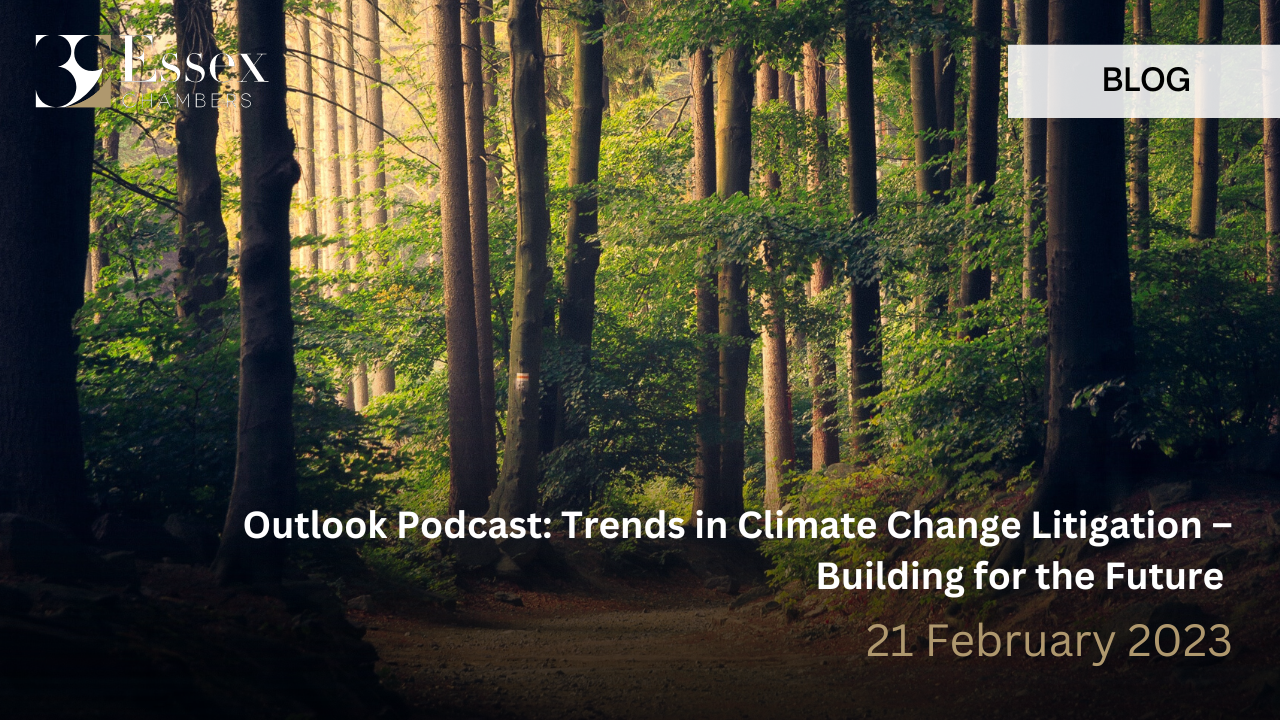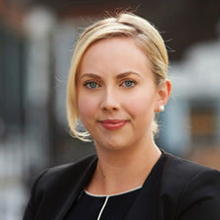Outlook Podcast: Trends in Climate Change Litigation – Building for the Future
 In this episode of Outlook, Camilla ter Haar and Ruth Keating discuss ‘Building for the Future’ with Joana Setzer, Assistant Professorial Research Fellow at the Grantham Research Institute on Climate Change and the Environment, at the London School of Economics and Political Science (LSE). This episode focusses on the trends in climate litigation and in particular what these trends mean for our construction sector clients.
In this episode of Outlook, Camilla ter Haar and Ruth Keating discuss ‘Building for the Future’ with Joana Setzer, Assistant Professorial Research Fellow at the Grantham Research Institute on Climate Change and the Environment, at the London School of Economics and Political Science (LSE). This episode focusses on the trends in climate litigation and in particular what these trends mean for our construction sector clients.
Joana Setzer’s main areas of expertise are climate litigation and global environmental governance. Since 2020 Joana has led the Grantham Research Institute’s Climate Change Laws of the World project, the most comprehensive global resource on climate policy, legislation and litigation.
What is Climate Litigation?
The Grantham Institute takes a narrow approach to the definition of Climate Litigation, defining it as the body of cases that are brought before judicial and quasi-judicial bodies that involve material issues of climate change science, policy or law. The litigation can be both climate-aligned and climate non-aligned litigation.
Strategic Litigation
Strategic litigation is continuing to rise. This is litigation brought with motives beyond the concerns of individual litigants and aimed at bringing about broader societal shifts. These shifts might be aimed at advancing climate policies; promoting public awareness; or changing behaviours of government or industry actors.
What are the Trends?
The trend for climate litigation (since 2015 when the the Grantham Institute began monitoring it) has been growing year on year, with the majority of cases in Global North but an increase in climate litigation is now seen around the world including in the Global South.
The majority of cases (around 70%) are against governments. In relation to cases brought against the private sector, over the last 12 months, the majority of those legal cases have been brought against carbon majors. However we are increasingly seeing a more diverse range of corporate actors involved in litigation – now approximately half of the cases are brought against fossil fuel companies and half against defendants in other sectors particularly in the food and agriculture, transport, plastics and finance sectors.
What about the Construction Sector?
The construction sector has not yet seen a rise in climate litigation, but as a sector it is vulnerable to this kind of litigation. Advisors to the construction sector ought to be aware of the way the sector can both experience the impacts of climate change and contribute to the problem – and the solution – in an important way.
Our clients ought to be aware of their role in mitigating climate change – as well as adapting to it – and its role in supply chains and the transport sector.
There are three ways in which litigation in relation to the construction sector might typically arise
- Challenges to planning and procurement stages of a project, including looking at the sustainability of a project, and actions which might discourage developments which might have a damaging impact on the climate and environment;
- Challenges relating to potential pollution resulting from construction and ongoing operation of the project; or
- Private disputes between commercial entities arising from the failure by a party to comply with relevant environmental obligations and design standards.
Is litigation really the best way to address the challenges of climate change?
Ideally, we would see less litigation and more action.
We will see more litigation if and when governments fail in respect of their duties, or where corporations’ actions do not reflect public statements made or indeed where corporations have not made commitments at all.
How can legal advisors help construction sector clients avoid litigation (and protect the planet)?
Legal advisors should bear the following points in mind:
- One way you can help your construction clients is by informing yourself about the landscape: learn about legislation, the science, the litigation. Once you, as a legal advisor, are well informed you are better able to share that knowledge with your lay clients.
- Break down actions and risks: Ask your clients what their net zero strategy looks like. Consider what it should look like.
- Analyse the directors’ responsibilities and consider how to reduce the risk of those directors being implicated in litigation.
- Look at potential greenwashing: Consider the types of communication and announcements being made by the company and advise on statements that should not be made.
- Help your clients to consider what sort of due diligence the company is carrying out within its supply chain and help your client to understand its responsibility and duty of care both up and down the supply chain.
Finally, open, and keep open, the channels of communication with those sectors of society who are seeking change. Reading, understanding and listening to what they are saying paves the way for avoiding litigation.
To hear more of our discussion, a link to the podcast can be found here: https://www.39essex.com/information-hub/insight/outlook-trends-climate-change-litigation-building-future


